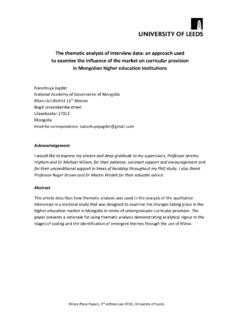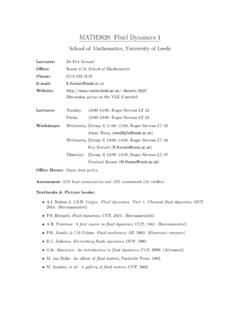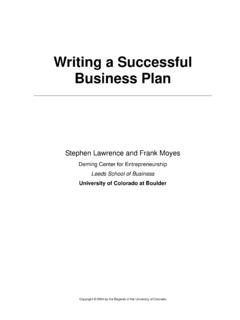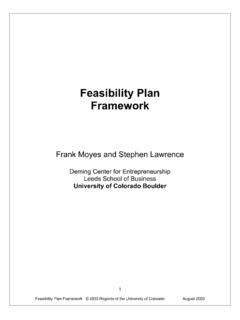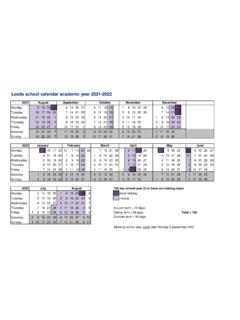Transcription of Rules for Award: 2021-22 - University of Leeds
1 Rules for Award: 2021-22 The University s Rules and minimum requirements for awards are defined in the Curricular Ordinances and Regulations. These Rules for Award provide a summary of the principal requirements of the Curricular Ordinances and Regulations, and expectations for how they are applied in practice. They explain the principles under which schools are authorised to make awards on behalf of the University , and they explain the University s general requirements for each type of undergraduate and taught postgraduate award. They also explain the University s classification system.
2 The Rules for Award work together with the relevant Code of Practice on Assessment and the Programme Specification to explain the requirements of the University , of the Faculty/School, and of the individual programme. These Rules for Award are applicable to all candidates regardless of entry date. 1. Principles The University operates a unified corporate degree, diploma and certificate awarding/classification system for undergraduate and taught postgraduate programmes that are not otherwise constrained by accreditation requirements.
3 The classification system is based on averaging the mark obtained across all qualifying or, in certain cases, the majority of modules comprising the programme with module mark being weighted in line with credit value. The University 's classification arrangements are designed to be consistent with the Framework for Higher Education Qualifications in England, Wales and Northern Ireland, including taking due account of the relationship between assessment arrangements and programme learning outcomes. These Rules are designed to ensure that: a.
4 The University 's arrangements are transparent; b. The arrangements are articulated as clearly as possible to all staff and students; and c. The arrangements in faculties and schools are absolutely consistent with what has been ratified through the Senate1. Terminology The term 'level' is solely used as a characteristic/attribute of a module, and the term 'year' is used to mean Programme Year as defined in Ordinance IX or XI. The term mark is used for a single point on the 0-100 Module Marking Scale and the term grade is used for a grade on the Classification Grade Scale.
5 2. Grading and Marking The University s marking scales and their translations are given in full in Annex 1. The scales are used in the marking and classification process as follows. Module Marks Faculties and schools (other than the Schools of Medicine and Dentistry in relation to the MBChB, and the MChD/BChD, programmes) return marks on a 0-100 scale. The marking scale 1 The Committee on Applications and/or the University Special Cases Committee, acting on behalf of the Senate, may prescribe in individual cases special requirements, arrangements or waivers for the achieving of an award and its classification (see ).
6 Being used should be declared to students via the relevant Code of Practice on Assessment. All assessed work is marked, within the relevant scale, according to the achievement represented. P/F P or F is used to denote a pass/fail in a module (such as a study abroad or work placement module) which is being marked on a pass/fail basis. Classification Average The Classification Average Scale is used for averages of module marks. Classification Averages are always expressed to two decimal places and rounded accordingly (see individual sections below for details of the weighting of Programme Years and the prescribed minimum Classification Average for different awards).
7 Academic Transcript The 0-100 scale is used for publication of marks in the University 's Academic Transcript. 3. Non-numeric Module Assessment Codes There are a number of non-numeric codes2 which Assessment Boards may use instead of, or alongside, the module marks. These are used to signify additional information that qualifies the marks, such as that no work was submitted or that some work is outstanding. 4. Minimum Pass Mark for Modules The minimum pass mark for undergraduate-level 1, 2 or 3 modules is 40. The minimum pass mark for taught postgraduate level M modules is 50.
8 5. Programme Specifications Programme specifications for awards of the University of Leeds (including intermediate awards and variants) are approved and are published online at Programme specifications state the minimum credit that must be studied for each award, alongside Rules about which modules are compulsory and optional. Programme specifications include links to specifications for the constituent modules which give the details of the learning outcomes, teaching and assessment for each module. 6. Progression and Eligibility for Award The minimum attendance, study and credit requirements for awards are prescribed in the Curricular Ordinances and Regulations.
9 A tabulated summary is provided in Annex 2. Students can only progress to the next programme year (stage of their studies) or to the award of a degree, diploma or certificate when they have: a. Complied with the requirements of the relevant Curricular Ordinance and Regulations ( obtained sufficient credits at the appropriate level in the prescribed manner); and b. Met the learning outcomes for the relevant programme year/award as detailed in the Programme Specification. This includes in particular: - Passing all modules indicated as pass for progression/award for the relevant year/award in the programme specification; and - Meeting any other requirements set out in the programme specification.
10 In addition, to be eligible for award, students must have achieved a Classification Average which is equal to or greater than the prescribed minimum (see individual sections below for details of 2 Non numeric codes are available via the Student Education Service website (see ). the weighting of programme years and the prescribed minimum Classification Average for different awards). Progression and Awards Boards take full responsibility on behalf of the Senate for the classification of awards to students for whom they are responsible.



